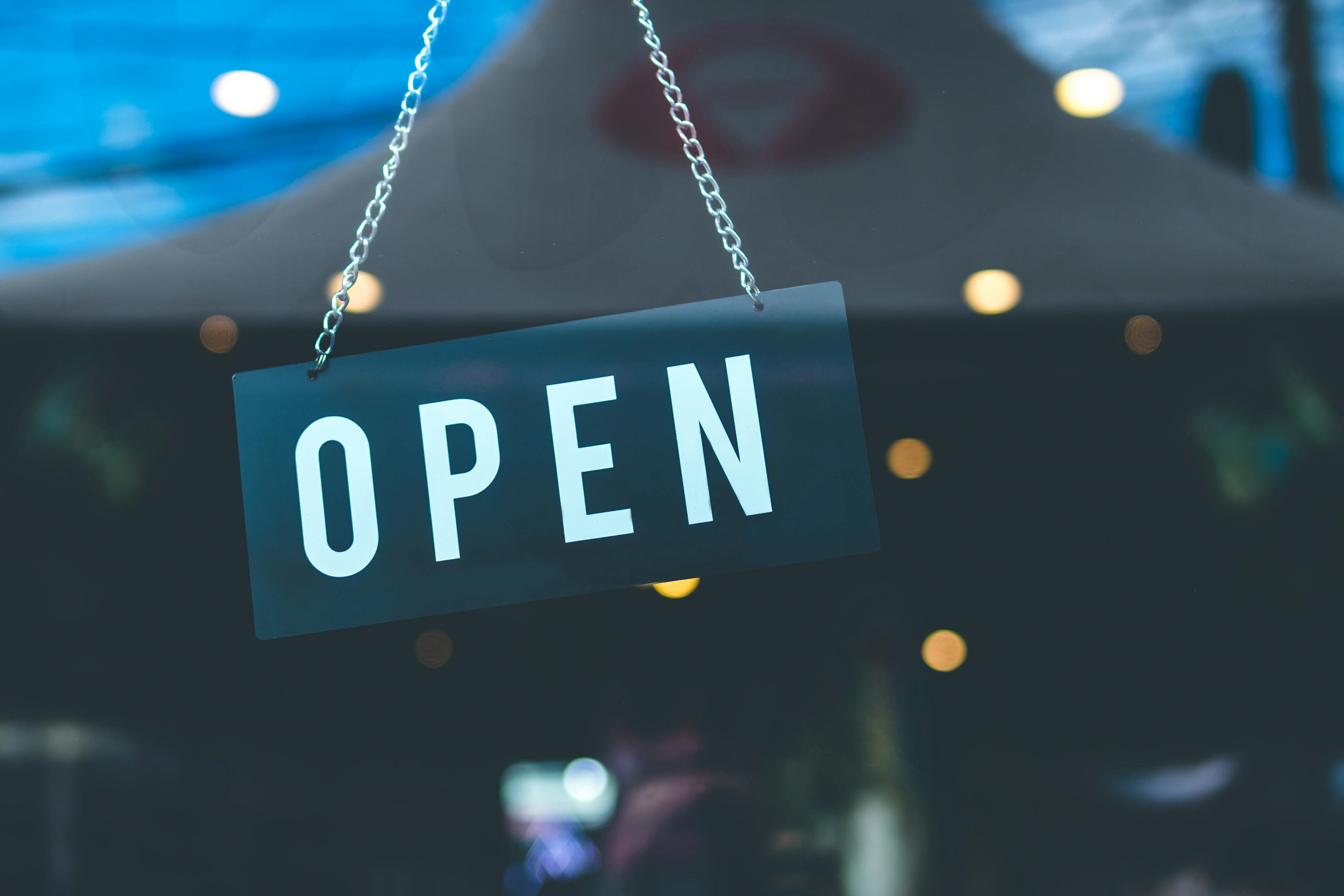From 2020 up until now, Shopify became the go-to platform for new online businesses. The number of merchants has risen to over 500,000 at this point. Established businesses may either already be or are looking into the prospect of expanding into a multi store Shopify establishment.
Product information management solves a lot of multi-store Shopify challenges that arise. Trying to handle the design and implementation of multiple stores is no easy feat. Not to mention the need to organize products and their attributed data to each store. Enter a tool like PIM, and you can keep all product data and export channels in one place. With a PIM system, businesses no longer need to hop around between systems, teams, and communication methods.
In this article, we discuss the benefits of opening more than one store. More critically, we’ll go in-depth about the specific challenges that arise when it comes to having a multi-store enterprise. Alongside that, though, there are ways in which PIM software can solve those challenges to help increase your revenue all around.
Why utilize a multiple Shopify store operation?
If you have yet to open more stores, you might be considering it because – despite the challenges – a multi-store Shopify operation has a pretty convincing rationale behind it.
Here are a few reasons why you might have a multi-store Shopify operation.
Business Growth
At its essence, the main goal of a multi-store Shopify business is massive growth. From this one aim, all other goals branch.
By expanding into new locales, you can drive growth. By increasing the potential customer base with buyer personas, you can open opportunities for growth. The list goes on. Ecommerce sites like Shopify have allowed businesses, both new and legacy, to hone in on vital openings that would not have been possible before. For example, brands like Nike can now sell direct-to-consumer. Multiple storefronts on Shopify increase a business’s revenue streams, while simultaneously diversifying them. It leads to much better benefits than the longer process of developing new products. Effective inventory management across these stores can further enhance business efficiency.
Enter international markets
A multi-store Shopify operation is built to allow businesses to localize to new countries. As a part of many growing brands’ desire for global scalability, Shopify makes it easy to recreate a brand according to a locale’s culture. That means transforming messaging to connect with this new audience with different buying habits, needs, and values. Regardless, entering new global markets opens chances for finding valuable customers elsewhere, increasing a business’ reach. When setting up multiple stores, it’s essential to understand everything you need to know about international commerce regulations.

Give all your products a chance
Sometimes, businesses may struggle with items sitting on warehouse shelves for months. This can be due to several reasons. Perhaps they are unpopular with the audience that frequents the main business site. Or maybe the products are difficult to find, especially if the business offers a wide selection of products. With a complex navigation system, many products may be left unseen. At the most basic level, a product may simply not correspond with the characteristics of the buyer persona.
Instead, add a new store that can creatively showcase such products.
For example…
- Separate different products by storefront for better customer targeting
- Sell overstocked items or unpopular items on an outlet
- Divide products with contrasting price points
- Convey unique brand messaging
- Include the same products but with different marketing or theme
Opening other store sites with key tweaks in brand messaging can make a huge difference. Businesses may sell unpopular items at lower prices, thus aiming their marketing to audiences who match that price range. For example, many luxury brands have side outlet stores to sell overstocked items at bargain prices. Usually, lowering prices too much won’t blow over well with buyers attracted to the high prices of a luxury brand. Multi-stores on Shopify give all products a chance, without needing to liquidate on a marketplace. It’s a strategic way to use Shopify to manage several stores effectively.
Experiment with a different business model
Alongside different buyer personas, businesses also try new approaches to their existing model. Many B2B manufacturers, distributors, or suppliers are flocking to Shopify to try more direct approaches. Doing so means changing the messaging completely, as well as the product presentation, to speak to a more intimate consumer base. This is a great way to keep up with the competition in a world of quickly evolving B2B customers. Managing several stores under one Shopify account allows for streamlined operations and easier analytics tracking.
What are the benefits of Operating and Creating Multiple Shopify Stores?
When done right, it leads to more opportunities for revenue streams. A multi-store front Shopify business thrives on diversification. When you don’t have all your eggs in one basket, you can maximize sales from each store.
In recent years, more entrepreneurs have been realizing the importance of two things: 1) Nicheing down and 2) vertical scaling, so to speak. This applies to many forms of business. With ecommerce, spreading your efforts across untapped avenues (for your business) before deciding to add more tools or investments to your one original operation can be a game-changer.
For one, it forces the business to hone in on specifics, which is key in a growing oversaturated retail world. It reveals the aspects that don’t work. Thus, it helps businesses find the right niche(s) that could bring much more revenue than being scattered. Furthermore, scaling vertically by talking on more storefronts helps diversify cash flow. The more storefronts you open ultimately means more revenue coming in. At the same time, you can experiment relatively risk-free with an easy-to-use solution like Shopify. This approach includes setting up multiple stores and understanding the different ways to manage stores effectively.
That being said, here are some indispensable benefits that multi-store Shopify brings to the table.
1. Ensure none of your inventory goes to waste
Capitalizing on the opportunities to sell overstocked products helps make up for inventory management costs. Wasting inventory space is a major source of loss. When it comes to products not seeing much sales, it’s further disappointing to have to sell overstocked items to marketplaces at major discounts or risk liquidating. Instead, a storefront can represent an affordable outlet store for your brand, while still keeping you in control of the brand image.
2. Serve multiple customers, locally and internationally
Specifying exact buyers per store isn’t just about personalized messaging. It also improves the user experience. When products are honed to match specific customer groups, it’s easier for them to find the right products. In contrast, a large store site with a heavy navigation system can lead to product invisibility. As a result, customers have less friction between them and their desired purchase. This strategy helps grow your business by ensuring customer satisfaction and retention. To manage several stores, consider using Shopify’s tools for inventory management and customer support to maintain efficiency.
3. Improve SEO targeting
Dividing stores by topic, theme, or buyer makes SEO much more effective. For one, the more specific you can get, the more likely the right buyer is to match up to the store.
For example, an eyeglasses manufacturing company will have far more competition with a general keyword on their main store. After all, all competitors will be vying for something like “eyeglasses stores” or “eyeglasses for men/women.” But with a separate storefront aiming to rank for “kids eyeglasses for astigmatism new york,” the results will be more narrow.
Simply, the more specific you are, the easier it is to find the right potential customer. Furthermore, tailored personalization to a group of people leads to longer site visits. With the right marketing strategies, each store can effectively reach its target audience.
4. Effortless scalability
Multistore storefronts on Shopify is just one way to scale beyond adding more products. Actually, it’s a relatively new way, heightened by the digital storm of ecommerce. Older businesses could not have dreamed of having multiple stores, each with a slightly different store theme or brand image. Now, Shopify’s opportunities open up the chance for immense commerce growth for companies.

5. Maximize sales
Finally, the more storefronts you have that target a set audience, the more potential sources of revenue you have. When each store is focused, it becomes more relevant and useful to the right buyer. One single store site that is all over the place will lead to lost prospects. You could be losing sales just from a complex navigation system alone. With a lot of diverse products, you’ll have trouble keeping people engaged. Would a customer looking for luxury men’s watches prefer a large jewelry store offering thousands of products or a highly specialized made solely for store men’s watches? The latter is simply easier to digest.
But what do I mean by “done correctly”? By that, I mean opening multiple Shopify stores only if you can and see a beneficial need to do so. Not everyone is necessarily ready to manage multiple sites at scale. It’s important to gauge where you are before venturing to open another store.
What You Need to Know About Managing Multiple Shopify Stores
Operating multiple Shopify stores requires effective inventory management and understanding how to set up multiple stores under one account. Businesses need to pay attention to analytics and customer support to ensure smooth operations. Marketing strategies should be tailored to each store’s target audience, ensuring each product line is presented effectively. Using basic Shopify features, you can manage several stores efficiently, providing a seamless shopping experience for different audiences.
Utilizing a multi-store Shopify operation can significantly grow your business by allowing you to reach new markets, target specific customer groups, and maximize sales. With careful planning and effective management, your business can thrive with many Shopify stores.
Should you take advantage of multiple stores on Shopify?
Do you currently only have one Shopify storefront? Or do you have a few and want to add more? No matter where you are, always assess your current processes.
After launching a storefront, it’s critical to take it slow. Test the waters first, maximizing the fullest potential of one high-quality store before considering more. For small to medium businesses who are already Shopify savvy, you will understand the importance of acclimating to the platform before attempting to expand.
The last thing any business wants is to grow too quickly. Doing so can surpass your ability to keep up. Therefore, it can lead to mismanagement, complexity, and eventually failure to create results that justify the investment.
So while selling globally or opening a store upon identifying a new potential audience is tempting, take heed. Knowing when to operate a multi-store Shopify business depends on your current systems.
Ask yourself the following:
- Are your teams working fluidly to meet demands?
- Is every process going smoothly?
- How is your ability to oversee and maintain high-quality data across all stores?
- What sort of feedback are customers providing?
If managing one or more stores is a breeze, you’re on the right track. If not, your foundation remains too shaky to tap into the opportunities of multiple stores.
For that, Product Information Management software creates a sturdy structure to support future storefronts. PIM is a tool businesses can use to implement scalable processes. By that, I mean that it is possible to set up automation and workflows that prepare you for the growth you want. In other words, adding multiple stores can feel like a breeze. Product information management software ensures you have trustworthy methods to handle them.
So the first step is understanding your business’ capability to handle multi-store Shopify operations.

But when do you know if you should open up another store?
If you don’t necessarily see a need to, don’t just yet. Only execute if you see that opening more stores can offer obvious value.
While the main reason to do so is growth, make sure you have a reasonable idea as to how a new store will maximize revenue. If you can clearly see that a new store can offer shoppers a better experience, like a more compact, narrowed navigation system with a focused product category, do so.
For example, having a crowded inventory with a complex spectrum of products can propel plenty of creative storefront ideas. While you can manage all that complexity, perhaps dividing your products will increase visibility with customers who become frustrated with searching. Or perhaps you can sell unpopular items in an outlet store.
All-in-all, the key to knowing how to implement a multi-store Shopify operation correctly is in the assessment. Understand how well you can manage your current backend systems. Once that’s under control, then you can think about how to adequately optimize your stores for success.
How does PIM address managing multiple Shopify store challenges?
While multi-store Shopify challenges might be hard to avoid, don’t let them bog you down. Many of the intricacies of managing product Information across stores can be alleviated with a simple solution: The best PIM software. Here’s how.
What are the challenges of a multi-store Shopify operation?
To sum it up, the major challenge of multi-store Shopify is overall management – of everything. One or two stores can be hard enough, depending on where the business is in its proceedings. But for a multi-store enterprise wherein each store has something different to bring to the table, managing is laborious without consolidated systems on the backend.
After all, you must think about how to best optimize each site – for both customer experience and SEO. You’ll have multiple sets of product data. So it’s necessary to be aware of each store’s purpose at all times to prevent mixed messaging. Furthermore, you must keep up with product description keywords, tagging systems per store, and how to consistently deliver high-quality product pages with great images.
Backend challenges arise with….
- Overseeing orders on separate sites
- Ensuring inventory is up to date on all sites
- Dealing with fulfillment and possible returns per site
- Keeping track of analytics/customer data on all stores
Needless to say, it can be easy for operations to feel scattered and siloed.

Dealing with a multi-store Shopify operation requires keeping track of all ins-and-outs of each store. So that means making that inventory updates in real-time to prevent any issues. Imagine if a customer ordered something on one site before product stock levels updated in time. At check-out, they’d be faced with the sudden out-of-stock label.
While those processes are difficult enough, there’s a whole other side to the equation – customer-facing information. Before businesses can even begin to deal with orders and inventory, they have to actually build each store for success. Proper management requires an understanding of what product data is going to what store. Dealing with product information management for all Shopify storefronts comes with its own series of challenges.
Managing quality product data for multi-store management
When your attention is divided between many storefronts, trying to maintain product data data becomes harder. The more stores a business has, the easier it is to see gaps in their management system. It finds that there are a variety of old versions of product sheets, out-fo-date information, or “tiny” issues like inaccurate units and misspellings.
Centralization solves the majority of issues. When your attention is spread across several Shopify stores (and perhaps other platforms or channels, like Amazon Seller Central), a consolidation of all company data is the answer. On PIM, it becomes possible to update straight from one place onto all storefronts.
The most critical aspect of PIM is the ability to maintain high-quality product information. As such, this translates to well-converting product pages across all storefronts. There are no longer instances of forgetting a page while manually editing them.
Instead, the same product information is populated on each product page, even if a single product is on more than one store. What this does is prevent customer dissatisfaction. With a connected ERP, pricing automatically updates on all storefronts to reveal the exact stock level.
Keeping up with buyer personas
Having different storefronts means diversifying your audiences. It’s so critical not to skimp on the proper optimization of each store. Upon identifying potential buyers, all the identification and demographic attributes become hint for transforming content. For example, marketing teams must be aware of pain points, interests, occupations, and other information to focus their messaging.
Buyer personas are so vital for optimizing strategically.
However, without a system that allows you to maintain separation between each store’s persona, it can lead to inconsistent messaging.
That’s why, it’s easier with PIM to tailor content to each buyer persona per storefront. When you have a bird’s eye view of your Shopify stores, you can plan and organize how you create each content to match the brand messaging.
One way to help streamline this on Shopify PIM is with workflows. Create a project for each Shopify store to create or update product content while maintaining buyer persona-focused messaging. Doing so helps keep teams focused.
Optimizing localized content
If businesses have stores selling to other countries, it requires even more effort to maintain cultural targeting. Content must match the specific attributes of that audience. Localization requires so much research or knowledgable content creators who know the locale. Otherwise, such stores may fall short in converting the right people if translations are off or prices are error-prone post conversions.
A PIM that deals with localization is immensely powerful in this global world. These days, selling in other countries is easier than ever – and it’s unusual not to do so. Instead of hiring a team to localize and translate content, a PIM and DAM software like Catsy automatically translates product data. Businesses can avoid potential issues with mixing up imperial and metric measurements and other locale-sensitive information.
Of course, it’s still important to ensure that the curated copywriting on localized stores matches the culture. Direct translations don’t always make sense. With PIM, it’s much more manageable to create workflows for localization teams and develop content projects for any storefront.
Manually uploading content & digital assets across stores
When it comes to writing content for each store, it’s necessary to manually update each product page per store manually, copying and pasting multiple times. In some cases, businesses make several copies of product descriptions and must tweak the wording here and there to match the voice of the store. On top of that, creatives and marketing teams have to remember the product data when authoring the content.
Digital assets are another part of the essentials of creating a multi-store Shopify. Normally, manual uploading and updating of digital assets take more work than necessary. First, finding and organizing images and other visuals in files takes a ridiculous amount of time. Then, it’s necessary to upload the right digital assets to the right store(s) on Shopify. That takes a lot of sifting through file names to match digital assets up with the right products, on the right store.
With PIM, all digital assets are organized alongside product information. That means that A) digital assets will always be linked to products no matter when you export that data, and B) they are easily searchable. All teams can easily find the high-quality digital asset they need at any time. Only one master version is needed, preventing clutter and confusion. Instead, a PIM solution facilitates digital asset transformation. In other words, you can
Final words
Shopify offers a lot of avenues for businesses to drive more sales. By opening more storefronts to cater to new buyers, new locations, or try on new business models, businesses can accelerate their revenue.
That being said, with high potential gains comes much responsibility. Managing multiple Shopify stores is no walk in the park. However, with tools that help alleviate the challenges that come with the upkeep and updating product information across all stores, the operation has a much better likelihood of success. A solid PIM system can offer that robust infrastructure.
Are you looking to maximize the benefits that a multi-store Shopify operation offers? Check out Catsy PIM and DAM software, and schedule a live demo with us today.

